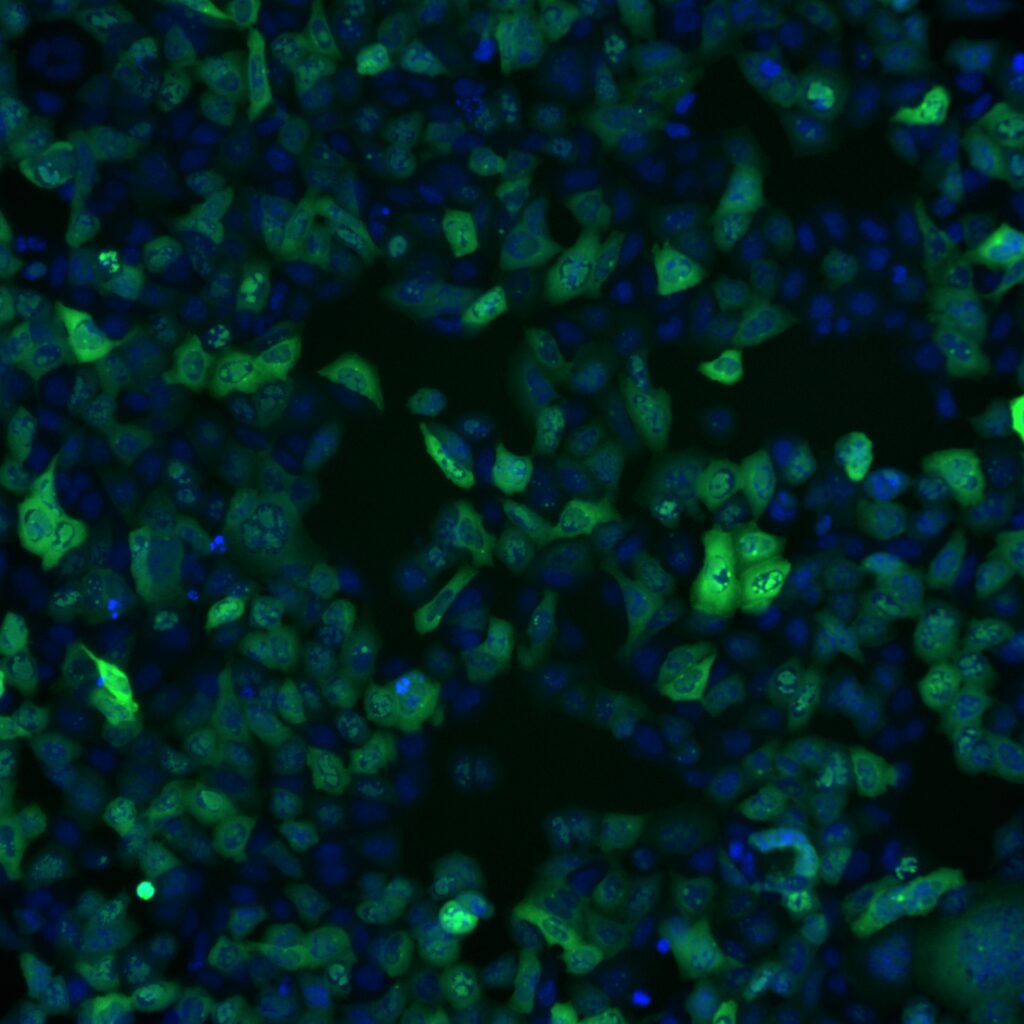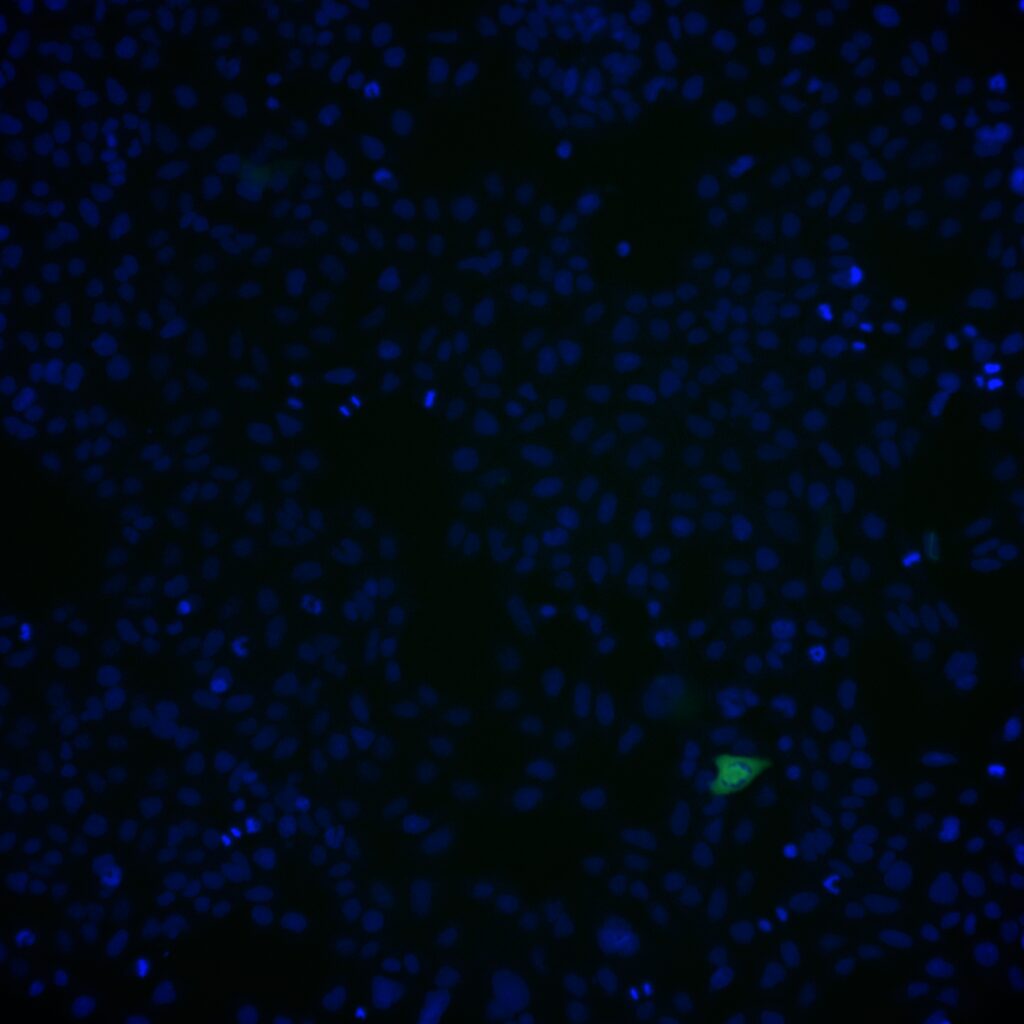Human Adenovirus 5 ANCHOR™
Characteristics
Human adenoviruses are medium-sized viruses (70 to 110 nm), with a genome consisting of double-stranded DNA (30,000 to 38,000 base pairs), with an icosahedral capsid and no enveloped.
Pathogenicity
Infection is usually silent during childhood. AdV infect epithelial cells.
- 10% of respiratory infections are linked to an adenovirus
- Adv is the causing agent of conjunctivitis, some serotype provoke severe keratoconjunctivitis (+++Japan)
- Severe adenovirus infection in immunocompetent persons has been reported (CDC, 2000)
- No antiviral available





Applications
Our Adv5 is combined with our ANCHORTM technology. This allows us to easily visualize viral infection and replication in high throughput, making this virus an excellent tool.
Adv5 is a virus used in many applications, for the discovery or repositioning of active antiviral molecules but also an excellent model for measuring chemical, physical or radiative disinfection.
Remarkably, Adenoviruses are highly resistant to UVC because they can take advantage of the cell repair mechanisms of nucleic acid alterations1. This resistance, even though they are DNA viruses, reinforces the idea of using a labelled Adv5 as a model for rapid testing of many irradiation conditions.

